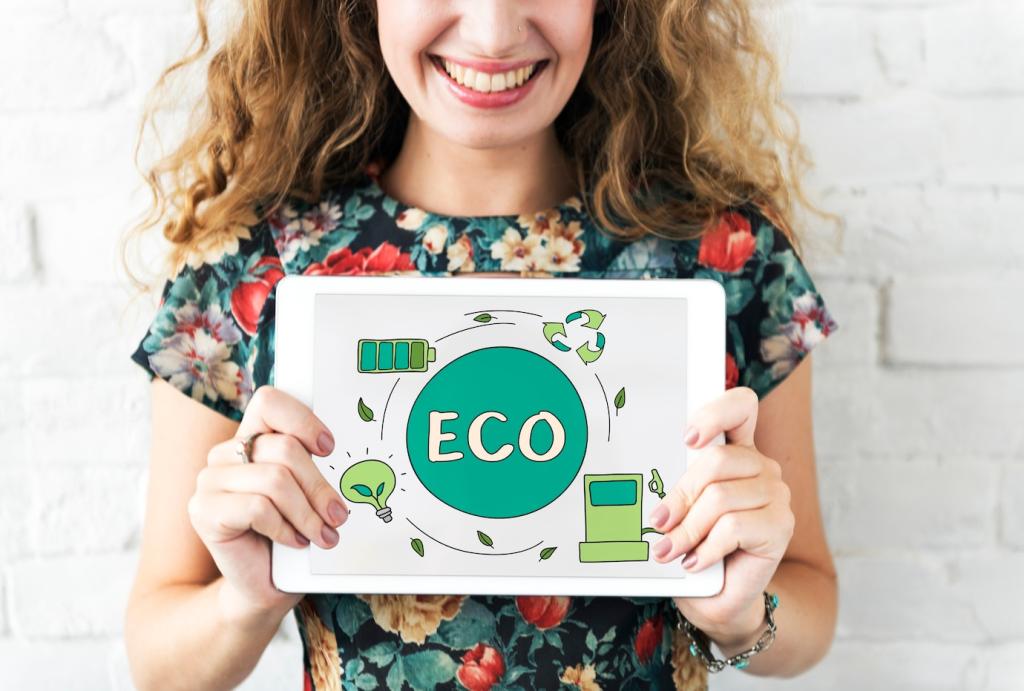Mastering the Art of Eco-Friendly Product Copywriting
Selected theme: Mastering the Art of Eco-Friendly Product Copywriting. Welcome to a space where persuasive writing meets planetary care. Learn how to craft honest, engaging copy that earns trust, proves impact, and inspires action—without hype or hollow claims. If this mission resonates, subscribe and join the conversation on ethical, effective green marketing.


Know Your Eco-Conscious Audience
Segment by motivations like health safety, climate action, minimalism, and durability rather than vague notions of being “green.” Identify constraints too—budget, access, and time—so your copy respects trade‑offs and offers practical, empathetic solutions that feel attainable and motivating.
Know Your Eco-Conscious Audience
Spend time where your audience speaks freely: local groups, sustainability forums, and packaging-free communities. Pair qualitative observations with on-site search data and message testing to reveal language that resonates. Tell us which phrases sparked the most genuine engagement for you.
Build Honest, Clear Green Messages
Ditch empty terms like “eco-friendly” unless you define the how. Specify the material, the process, and the measurable benefit: recycled aluminum casing, plant-based dyes, compostable mailers. Plain language reduces friction and shows respect, guiding mindful decisions without inflated promises or ambiguity.
Build Honest, Clear Green Messages
Name sources and standards: FSC-certified paper, GOTS organic cotton, closed-loop aluminum. Explain what each label means in everyday terms. Link to sourcing pages and audits so readers can verify claims. Transparency becomes a story that builds credibility with every sentence and supporting detail.
Build Honest, Clear Green Messages
Turn data into meaning. Instead of “30% less water,” say “saves about 20 liters per shirt—the equivalent of three quick showers.” Context helps people picture impact. Invite readers to ask questions about your metrics, and commit to answering with sources and clear methodology.
Storytelling That Shows Impact
Introduce real people and locations behind your product. A small soap brand once profiled a Nicaraguan farmer co‑op by name, describing seasonal harvests and fair pay. That single story doubled newsletter replies because readers felt connected to the people their purchase supported.
Voice, Tone, and Brand Personality
Choose your voice on a spectrum
Decide where you live between warm mentor, curious neighbor, and expert guide. Draft one paragraph in each voice, then test. The right fit will feel natural to write and easy for readers to recognize, building familiarity that compounds with every newsletter and caption.
Inclusive, empowering phrasing
Avoid shaming or moral superiority. Use language that invites participation: “Start small with one refill,” “Borrow our care guide,” “Swap when it’s time.” Empowerment lowers defenses and sparks progress. Ask your audience which tiny habit they’ll try this week and why it feels doable.
Ethical persuasion and CTAs
Persuasion can be principled. Use specificity, social norms, and timing without manipulation. Frame calls to action as collaborative: “Join our materials update list,” “Compare impacts with our simple chart.” Ethical CTAs respect autonomy while guiding readers toward choices aligned with their stated values.
Know the rules and regulators
Study the FTC Green Guides, ASA guidance in the UK, and ACCC rules in Australia. Avoid absolute, unqualified claims. Document evidence before publishing. Set a review cadence so every environmental statement remains current as suppliers, packaging, or processes evolve over time.
Use certifications correctly
Name certifiers and scope clearly: B Corp for overall performance, FSC for forest products, OEKO‑TEX for textiles, EPEAT for electronics, Leaping Bunny for cruelty‑free. Explain what each covers—and doesn’t—so readers grasp the boundaries. Invite questions and link to the issuing organizations.
A pre-launch claims checklist
Create a living checklist: define the claim, add source links, verify dates, note methodology, include legal review, and secure stakeholder sign-off. One brand avoided a public correction by catching an outdated recycling statistic the night before launch. That checklist earned its keep immediately.
Conversion With Conscience
Product page anatomy for trust
Lead with a clear benefit headline, then specify materials, care, and end-of-life options. Add impact metrics, sourcing notes, and concise FAQs. Strong imagery and captions show usability. The goal is simple: answer real questions so choosing responsibly feels both easy and satisfying.
Value-aligned calls to action
Replace pushy commands with collaborative invitations: “Refill and reduce waste,” “Choose the repair kit,” “Get restock reminders.” Tie actions to outcomes readers want—less clutter, longer product life, cleaner routines. Ask subscribers which CTA wording felt most respectful and still motivated their decision.
Microcopy that reduces uncertainty
Use small notes to calm big worries. Clarify materials, compatibility, disposal, and care in plain language. Link to a concise impact explainer. When concerns shrink, momentum grows. Invite readers to submit one confusing phrase they’ve seen so we can rewrite it together next week.
SEO and Discoverability for Green Brands
Intent-based keyword clusters
Group terms by intent: educational (“what is closed-loop manufacturing”), comparative (“bamboo vs cotton towels”), and transactional (“refillable deodorant near me”). Match content depth to intent, then interlink thoughtfully. This structure helps searchers and bots understand your expertise without sacrificing clarity or honesty.
Structured data for sustainability
Use schema to highlight materials, certifications, and lifecycle details where appropriate. Clear metadata, descriptive alt text, and concise page titles reinforce trust across channels. Invite your developer or writer to partner on this, then share a small win once your enhancements go live.
Evergreen content that educates
Publish guides that outlast trends: care and repair tutorials, recycling myths debunked, material spotlights, and sourcing journeys. Link these to product pages thoughtfully. Education compounds authority over time and invites subscribers to return for helpful answers, not just announcements or seasonal updates.

